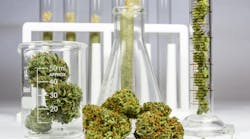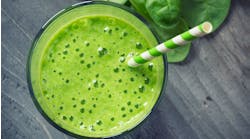The Government of Canada in June published final regulations for New Cannabis Products: Edible Cannabis, Cannabis Extracts and Cannabis Topicals. The rules will provide a roadmap when and if the U.S. deals with similar national legislation to legalize cannabis compounds, including their use in food.
There were no surprises in the rules, which take effect Oct. 17, and codify the country's 2018 Cannabis Regulations. These final rules enable licensed processors to begin selling products, although there will be a delay in availability of these products past Oct. 17 because companies will have to apply to Health Canada for authorization to sell the products.
"And this may take until mid-December," predicts The Acheson Group, a global food safety consulting group started by former FDA associate commissioner for foods David Acheson.
Health Canada is closely tracking the new regulations with those of the Safe Food for Canadians Regulations (SFCR), which is similar to U.S. FDA regulations on foods and beverages.
Much of the below comes from an Acheson Group analysis:
The rules replace the terms “edibles containing cannabis” and “cannabis concentrates” with three new classes: “edible cannabis,” “cannabis extracts,” and “cannabis topicals.”
The new regs establish requirements pertaining to the production, distribution and storage of cannabis to control quality and generally to address the risk of foodborne illness associated with edible cannabis. For example, processors that produce edible cannabis or cannabis extracts must have a written preventive control plan.
Sampling and testing requirements include final product testing for THC, CBD and CBDA content; microbial and chemical contaminants; residues of solvents used in the production of cannabis oil; and dissolution or disintegration testing (on discrete units intended for ingestion or nasal, rectal, or vaginal use).
There is a limit of 10mg THC per discrete unit and immediate consumption for edibles. Edibles must be shelf-stable (i.e., not require refrigeration or freezing); can have only food and FDR-approved food additives as ingredients; cannot contain poisonous or harmful substances or be fortified with vitamins or mineral nutrients; must follow food safety regulations of the Food and Drugs Act (FDA); cannot contain a food described in an FDR-issued Temporary Marketing Authorization Letter; cannot contain meat, poultry, or fish, except authorized dried products.
For cannabis extracts, flavoring agents, one or more carrier substances and substance necessary to maintain the quality or stability of the product can be used, but sugars, sweeteners or sweetening agents are not allowed.
Companies cannot promote cannabis in a manner that could be appealing to young persons; through a testimonial or endorsement; by the depiction of a real or fictional person, character or animal; or in a manner that associates it or a brand element with, or evokes a positive or negative emotion about or image of, a way of life (e.g., glamour, recreation, excitement, vitality, risk or daring).
For an update on how edibles are developing in the U.S., see our June cover story, How Much Real Potential Is There in Cannabis?

